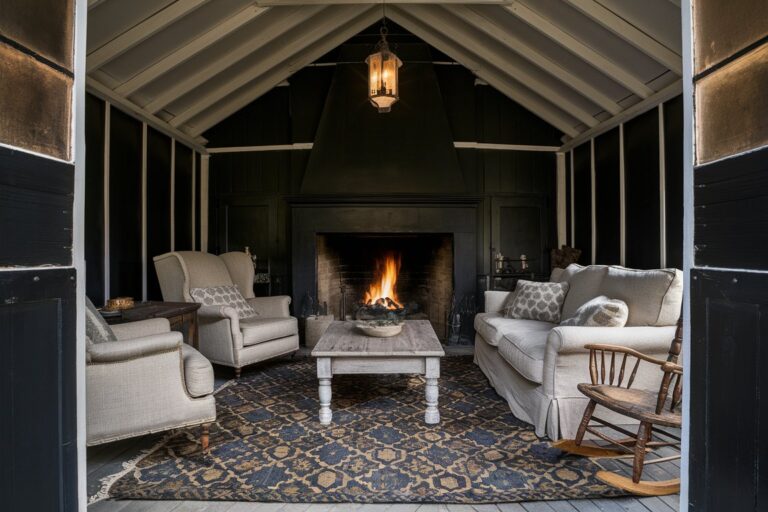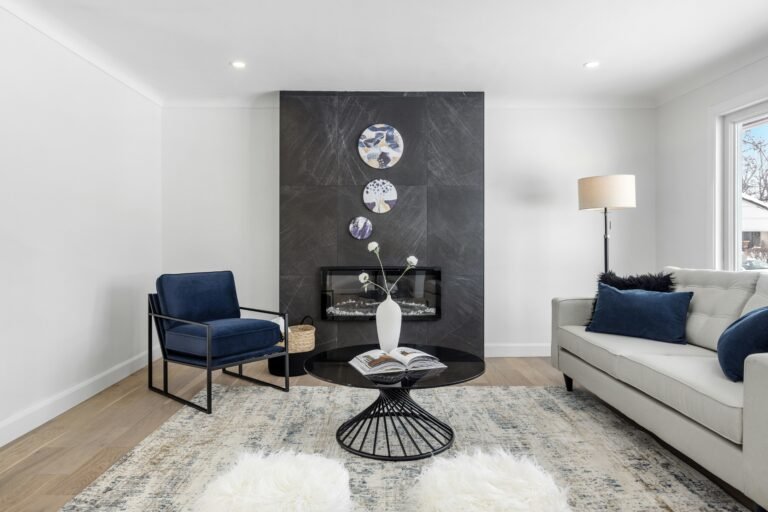Transform Your Space: Mid Century Living Room Makeover Guide
This site contains affiliate links. I may earn a small commission, at no extra cost to you.
Ready to Give Your Living Room That Mid Century Magic?
Alright, let’s be honest — there’s something undeniably cool about mid century design. It’s timeless, bold without trying too hard, and effortlessly stylish. You know, the kind of style that makes guests say, “Wow, your place looks straight out of a magazine,” while you casually pretend you didn’t spend hours scrolling Pinterest for “Mid Century Living Room Makeover ideas.”
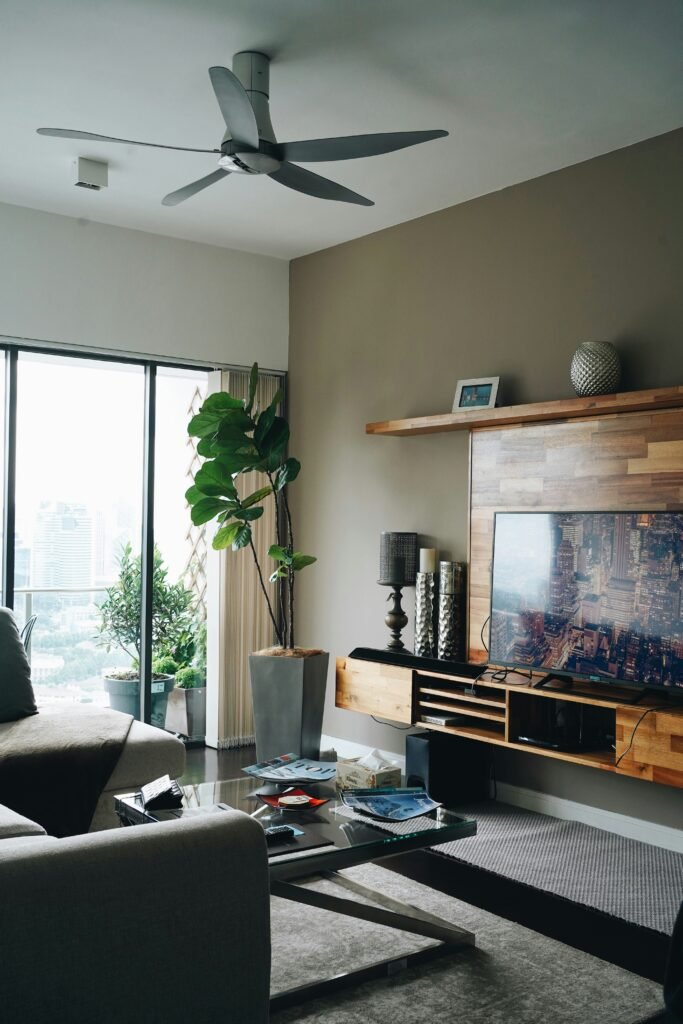
Mid century living room makeovers are having a serious moment — and honestly, it’s about time. The clean lines, organic shapes, and warm wood tones have a way of making any space feel instantly sophisticated and lived-in. In my opinion, that’s what makes this design style so addictive: it’s classy without being cold.
Now, I’ve worked on a handful of mid century-inspired projects over the past few years, and let me tell you — getting that balance between retro charm and modern comfort isn’t always a walk in the park. But when it’s done right? Oh, it’s magic. Think sleek wooden furniture, muted color palettes, a hint of brass, and that perfect low-profile sofa that just invites you to binge-watch old movies.
So, ready to give your living room a facelift that feels both nostalgic and fresh? Let’s talk about how to master a mid century living room makeover — without needing a Hollywood budget or a professional crew.
What Makes a Mid Century Living Room So Iconic?
Before you start shopping for that vintage teak coffee table or obsessing over color swatches, let’s get clear on what actually defines a mid century living room. Because, trust me, this style is more than just wooden legs and orange cushions.
In my experience, mid century design is all about simplicity, functionality, and form. The goal is to create a space that feels clean but never sterile, curated but never pretentious.
Here are the key elements that make this style instantly recognizable:
- Clean, simple lines – Furniture in mid century spaces avoids unnecessary frills. Every piece serves a purpose and has a strong silhouette.
- Natural materials – Think warm woods like walnut, oak, and teak. I always say: if it feels like nature could’ve made it, it probably fits the look.
- Neutral and earthy tones – Mid century color palettes are grounded in shades like beige, olive, mustard, and rust. Then they’re spiced up with accents of turquoise or burnt orange.
- Geometric forms – Circles, triangles, rectangles — geometry is your friend here. Whether it’s in wall art or furniture structure, it adds that retro character.
- Mix of old and new – The secret sauce? Blending vintage-inspired pieces with modern updates. Because you want timeless, not dated.
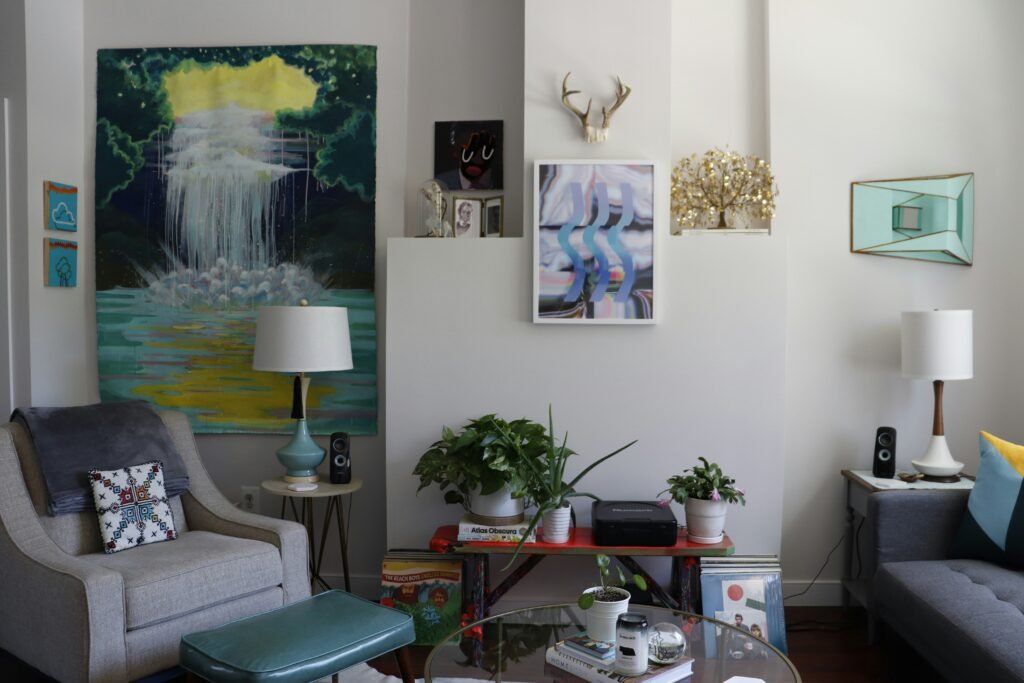
Ever noticed how a well-designed mid century space feels balanced? That’s the trick. You want just enough nostalgia to make it charming, but not so much that it feels like a Mad Men set.
Why Everyone’s Obsessed With the Mid Century Living Room Look (Again)
You might be thinking: Didn’t this trend peak like, 60 years ago?
Technically, yes — but mid century modern design has something few trends do: staying power.
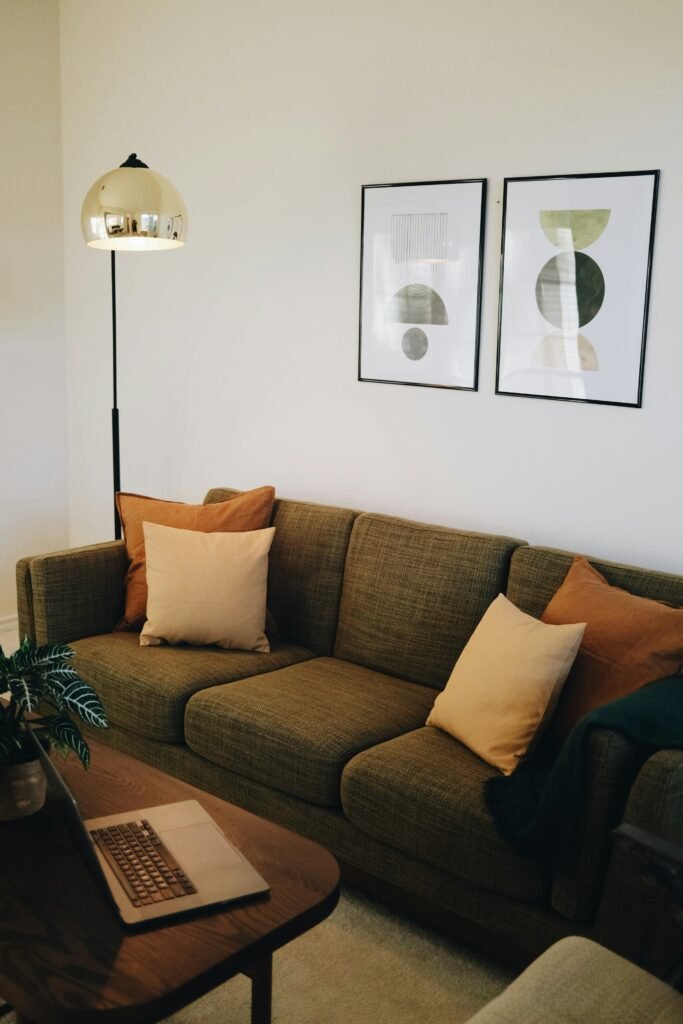
According to my experience, there are three big reasons why mid century living room makeovers are making a huge comeback in 2026:
- It’s timeless, not trendy.
Every few years, new design fads pop up — Japandi, boho, minimalism — and fade just as fast. But mid century design sticks around because it blends beauty and practicality. - It fits modern living.
Most of us live in apartments or smaller homes these days. Mid century furniture — with its slim profiles and functional layouts — was basically made for compact spaces. - It works with everything.
Whether your space leans industrial, Scandinavian, or coastal, a mid century sofa or credenza can blend in perfectly.
I personally love how this style gives personality to even the plainest spaces. You don’t need ornate details or fancy décor; you just need thoughtful design choices. And honestly, that’s what makes it accessible for anyone who wants a stylish home without a full-blown renovation.
So, if you’ve been itching to upgrade your living room without losing your personal touch, this is the perfect style to experiment with.
Planning Your Mid Century Living Room Makeover
Alright, let’s roll up our sleeves — this is where the fun (and sometimes the confusion) begins. If you’ve ever tried to tackle a living room makeover before, you already know it’s not just about buying pretty things. It’s about creating a cohesive look that feels intentional.
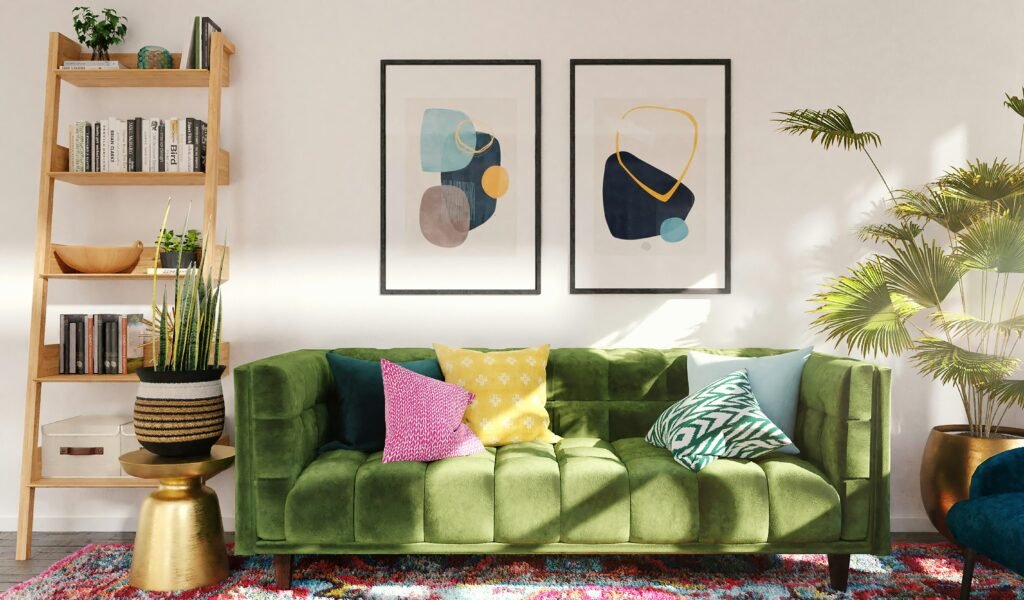
Here’s what I always recommend before diving into your mid century living room makeover:
1. Start With a Vision Board
Yes, I know — it sounds cliché. But in my opinion, visual planning is everything. Collect images, furniture styles, and color schemes that inspire you. Tools like Pinterest or Canva are your best friends here.
When I plan a client’s space, I always start with 15–20 images that share a vibe. Are we going for a warm retro den or a light, airy lounge? Having a direction saves time and money later.
2. Define Your Budget
This one’s less glamorous, but it’s crucial. Mid century pieces range from affordable reproductions to pricey designer originals. I recommend splitting your budget:
- 70% for core furniture (sofa, chairs, coffee table)
- 20% for décor and accessories
- 10% for lighting
Trust me, lighting alone can completely transform your space — so don’t overlook it.
3. Choose Your Hero Piece
Every living room needs a hero — a statement item that anchors the room. It could be a walnut sideboard, a mustard velvet sofa, or even a stunning sunburst mirror.
In my experience, once you choose your hero piece, the rest of your décor will naturally fall into place. It’s like your space finally decides what it wants to be.
4. Don’t Rush the Process
This is my biggest piece of advice — and yes, I learned it the hard way. A successful mid century living room makeovertakes time. It’s not about buying everything at once; it’s about curating your space.
Some of my best client projects evolved over months as we found the right vintage items or balanced color tones. The beauty of this style is in its patience — so take your time and enjoy the process.
Color Palettes That Scream “Mid Century” Without Yelling
Now let’s talk color — because let’s face it, a mid century living room is nothing without that perfectly balanced palette.
I always tell clients: Color is emotion. It sets the tone for your entire room. Mid century color schemes strike a sweet spot between calm and bold — earthy but playful.
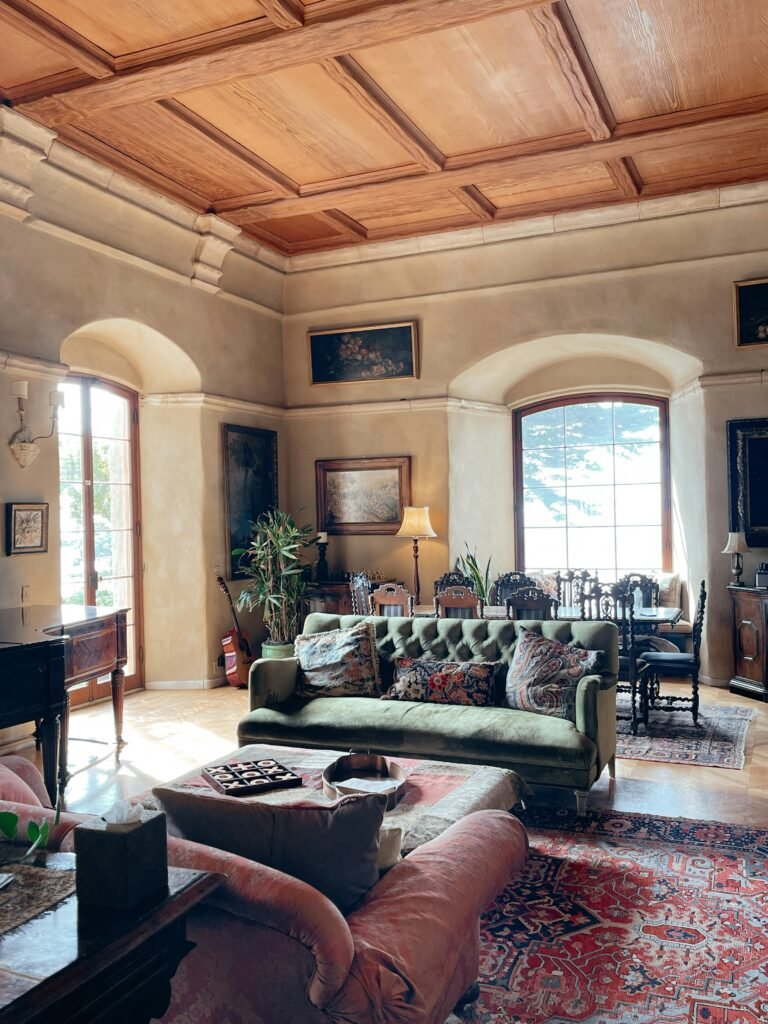
Here are some combinations that never fail me:
- Walnut brown + Mustard yellow + Olive green – Warm, grounded, and cozy.
- Teal + Rust + Cream – For that retro pop without looking cartoonish.
- Charcoal + Walnut + White – A more modern, minimalist interpretation.
- Navy + Burnt orange + Beige – Moody, elegant, and surprisingly timeless.
In my opinion, the trick is balance. If you choose bold furniture (say, a teal sofa), tone down the accessories. If your walls are colorful, go for neutral furniture. Mid century is all about harmony, not chaos.
And please, resist the temptation to match everything. Real mid century spaces mix tones and textures — a walnut table here, a brass lamp there — nothing too perfect.
Choosing the Right Furniture for Your Mid Century Living Room Makeover
Alright, so you’ve got your vision board, color palette, and budget sorted. Now it’s time for the real star of the show — the furniture. Because let’s be honest: without those sleek, low-slung pieces and tapered wooden legs, can you even callit a mid century living room makeover?
In my opinion, furniture selection is where most people either nail it or completely lose the plot. The key is to mix form and function. Mid century design wasn’t about making pretty furniture just to look at; it was about creating pieces that actually work for everyday life.
Here’s what I recommend focusing on:
1. The Sofa: Your Living Room’s Anchor
If there’s one thing that defines your space, it’s your sofa. Go for clean lines, low backs, and wooden legs. Avoid overstuffed cushions or ornate designs.
Personally, I’m obsessed with walnut-framed sofas in neutral upholstery — think cream, gray, or muted olive. They look classic, go with everything, and instantly scream mid century.

If you want a pop of color, try a mustard or teal velvet sofa. It adds warmth and gives your space that subtle retro flair without making it feel like a ‘50s time capsule.
2. Coffee Table: The Mid Century Centerpiece
A good coffee table pulls everything together — visually and practically.
In my experience, mid century coffee tables are defined by:
- Sculptural shapes (oval or kidney-shaped tops are very era-accurate)
- Slim wooden legs
- Smooth finishes in walnut or teak
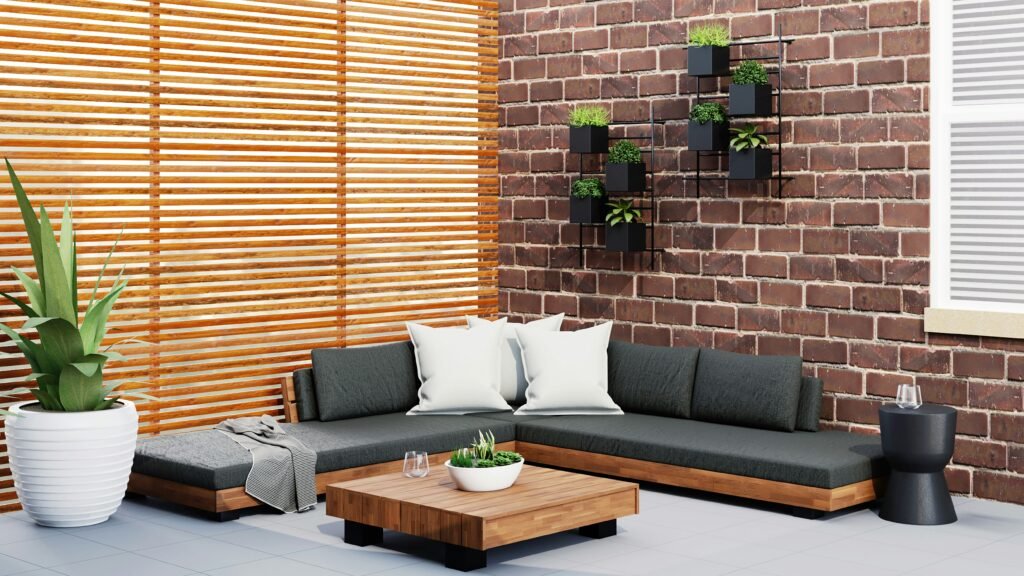
I once helped a client pick a glass-topped coffee table with a sculpted wood base, and honestly, it changed the entire mood of the room. That’s the magic of this style — one piece can shift everything.
3. Armchairs and Accent Seating
Adding an accent chair (or two) is a quick way to make your space look professionally styled. Go for classic silhouettes like the Eames Lounge Chair or Wegner’s Papa Bear Chair — or affordable modern dupes if originals are out of budget.
I prefer mixed textures here — maybe a leather chair beside a fabric sofa. It keeps the look layered and interesting.
4. Credenzas, Sideboards & Storage
This is one of my favorite parts of mid century design — functional furniture that doubles as art. A walnut credenza with sleek brass handles can hold your clutter and act as a design statement.
Pro tip? Don’t overload it. Keep the surface styled with a few tasteful items: a ceramic vase, a sculptural lamp, or a stack of art books. In my experience, restraint is what keeps a mid century space looking intentional rather than chaotic.
5. Balance Vintage and Modern
You don’t have to go full retro. In fact, I recommend mixing in modern pieces to keep things feeling fresh. A contemporary sofa can still look mid century when paired with a vintage sideboard or sputnik chandelier.
The best mid century living rooms blend eras seamlessly — a little old, a little new, all with the same design DNA.
Layout and Flow: Designing With Purpose
Ever walked into a room that looks good but just feels… off? That’s a layout problem.
In my opinion, a successful mid century living room makeover isn’t just about what you buy — it’s about how you arrange it.
This design style thrives on open flow and balance. Every piece should have breathing room. You want your space to feel spacious, not stuffed.
Here’s what I suggest:
1. Keep It Open and Airy
Mid century design loves open plans. Even if your space is small, avoid blocking sight lines. Arrange furniture so the room feels open and connected.
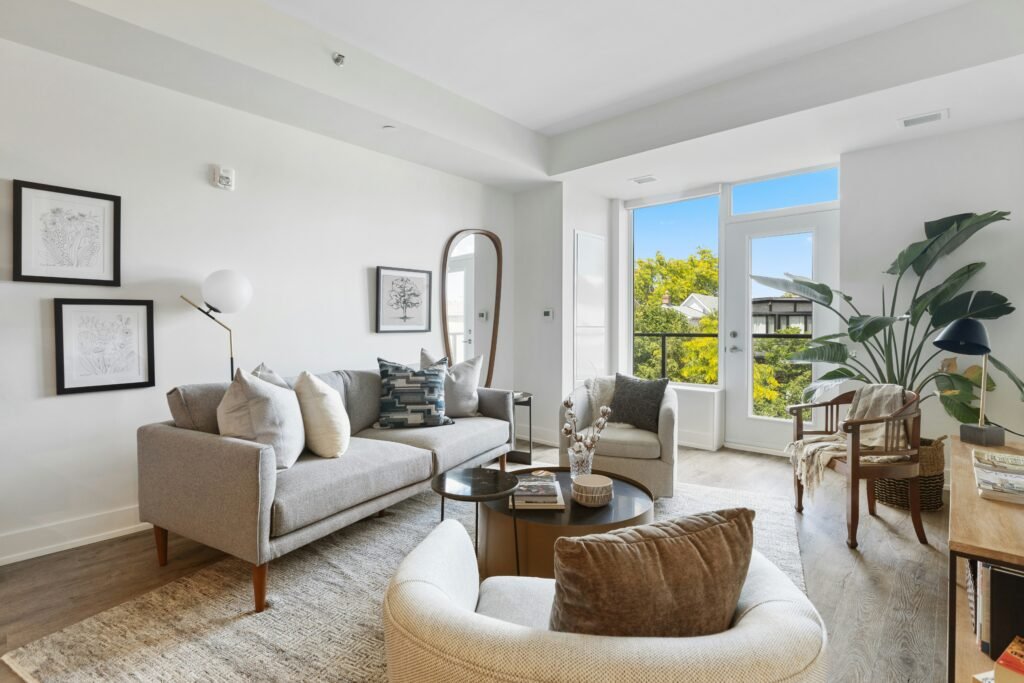
Push larger pieces (like sofas) slightly away from walls — this trick instantly gives your room depth.
2. Create Conversation Zones
Your living room should feel inviting — a place to actually live in. I recommend arranging seating around a focal point (like your coffee table, fireplace, or even a great window view).
In my experience, a triangle layout works beautifully: sofa + chair + table. It creates natural flow and encourages conversation.
3. Use Symmetry (But Not Too Much)
Mid century design loves balance, but not perfection. Don’t make everything matchy-matchy. Instead, create visual balance — if you have a large piece on one side, offset it with two smaller ones on the other.
I personally like asymmetrical arrangements because they feel dynamic and lived-in.
4. Layer With Rugs
Never underestimate a good rug. It grounds your space and adds warmth. For a mid century vibe, go for geometric patterns or solid textures in wool or jute.
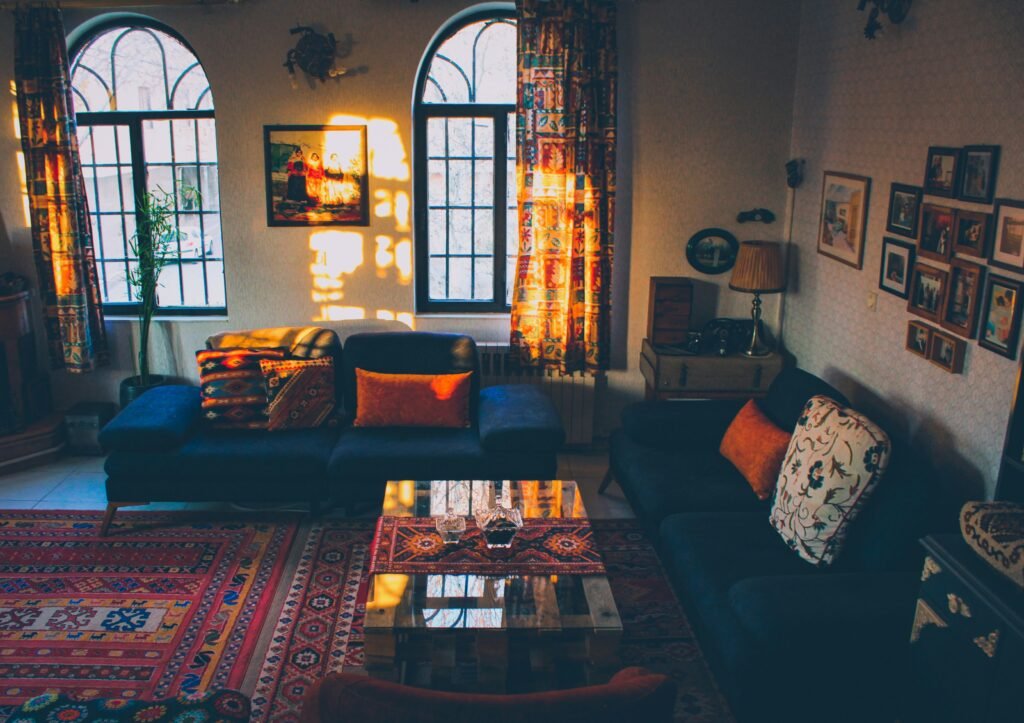
A rug that’s slightly larger than your furniture grouping will make your room look instantly more cohesive (and expensive, if I’m being honest).
Lighting: The Secret Weapon of a Mid Century Living Room Makeover
If furniture is the body of your design, lighting is the soul.
I’ve seen so many spaces fall flat just because the lighting was an afterthought. And trust me — no amount of fancy furniture can save a poorly lit room.
Here’s what I’ve learned over the years: mid century lighting is where you can have some serious fun.
1. Go Bold With Fixtures
Mid century light fixtures are basically art installations. Think sputnik chandeliers, arc floor lamps, and tripod table lamps.

If you’re nervous about making a bold choice, start small. Swap out your ceiling light for a statement pendant — it’s a simple upgrade with huge impact.
2. Layer Your Lighting
A well-lit living room needs more than one source. I always follow the three-layer rule:
- Ambient lighting: Overhead fixtures or recessed lights for general brightness.
- Task lighting: Floor or table lamps for reading or working.
- Accent lighting: Spotlights or sconces to highlight art or furniture.
It’s like dressing your room in layers — each one adds depth and mood.
3. Warm, Not Harsh
Avoid cool white bulbs that make your space feel sterile. Mid century interiors thrive in warm, soft light. I usually go for bulbs in the 2700–3000K range — they create that cozy, nostalgic glow that makes your walnut furniture shine.
4. Mix Metals, But Keep It Cohesive
Brass, matte black, and bronze all look fantastic in mid century interiors. Just don’t mix too many finishes in one room. In my opinion, two is the sweet spot — say, brass and black.
Textures and Materials: Bringing It All Together
One thing I’ve noticed over years of working with clients is that people often forget how important texture is. You can have the perfect color palette and furniture layout, but if everything feels too smooth or uniform, it’ll fall flat.
Mid century living rooms are all about balance — mixing smooth with rough, shiny with matte, wood with fabric.
Here’s how I like to layer textures:
- Wood: The backbone of mid century design. Walnut, teak, and oak add warmth and authenticity.
- Fabric: Go for tactile upholstery — linen, tweed, or velvet. Each adds richness without overpowering the design.
- Metal: Brass and steel accents bring in that retro glam vibe.
- Glass: Use it sparingly for a clean, airy touch (like in coffee tables or lighting).
- Natural fibers: Jute rugs, rattan chairs, or woven baskets keep things grounded and organic.
In my opinion, contrast is everything. For example, a sleek leather chair beside a textured wool rug adds instant dimension. You want your space to feel as good as it looks.
Art, Decor, and the Finishing Touches
We’re getting to the fun part — the personality layer.
Once the big pieces are in place, your art and décor bring the story together. This is where your mid century living room makeover transforms from “nice” to “wow, that’s so you.”

I recommend starting with these:
- Wall Art: Abstract prints, geometric patterns, or vintage posters from the 50s and 60s. Bonus points for earthy tones or bold pops of color.
- Plants: You can’t go wrong with greenery. Snake plants, fiddle leaf figs, or monstera add life (and they look amazing next to wood furniture).
- Mirrors: Round or sunburst mirrors are classic mid century elements that open up your space.
- Books & Accessories: Display a few art or design books, vintage ceramics, or sculptural objects — but keep it minimal.
In my experience, styling is all about editing. If you find yourself asking, “Does this add anything?” — it probably doesn’t.
Budget-Friendly Tips for a Mid Century Living Room Makeover
Alright, time for some real talk — not everyone’s wallet is ready for designer furniture or rare vintage finds. And that’s completely fine. In my opinion, great design isn’t about how much you spend; it’s about how smartly you spend it.
Over the years, I’ve learned a few tricks to pull off a stunning mid century living room makeover without emptying your savings account. Here are my go-to strategies:
1. Mix High and Low Pieces
You don’t need to furnish your entire room with expensive originals. I always suggest splurging on one or two high-quality items — maybe a solid wood coffee table or a great sofa — and then balancing them with affordable décor.
For example, I once worked on a small city apartment where we invested in a gorgeous walnut credenza but sourced everything else from IKEA and secondhand stores. The result? You’d never guess it wasn’t all high-end.
2. Thrift and Vintage Hunt
This is where the fun happens. Mid century furniture was built to last, so there’s plenty of it still out there. Check local thrift stores, estate sales, or Facebook Marketplace.
According to my experience, you’ll often find genuine vintage treasures — side tables, chairs, or lamps — at a fraction of retail prices. And honestly, that patina and wear just add character.
3. DIY Where You Can
If you’re even a little handy, DIY projects can stretch your budget big time.
You can:
- Refinish old wooden furniture with teak oil.
- Swap out hardware for brass or matte black pulls.
- Spray-paint old lamp bases for a quick modern update.
I’ve personally done all three — and every time, I’m shocked by how transformative those small changes can be.
4. Use Paint Strategically
One can of paint can change everything. If new furniture isn’t in the budget, refresh your walls instead.
In my opinion, mid century colors like olive green, muted teal, or creamy beige instantly set the tone. Paint an accent wall behind your sofa or even your built-in shelves — it’s the cheapest way to create visual impact.
5. Shop Smart Online
Websites like AllModern, Article, and Wayfair have tons of mid century–inspired pieces that don’t cost a fortune. You just have to look for the right details — clean lines, tapered legs, and warm wood tones.
And don’t forget — lighting and accessories often define the look more than the furniture itself.
Common Mid Century Makeover Mistakes (and How to Avoid Them)

Now, let me save you from some classic mistakes I’ve seen (and occasionally made myself — we’re all human).
1. Overdoing the “Retro” Look
Mid century design is timeless because it’s subtle. The goal isn’t to make your space look like a museum from the 1950s.
I recommend aiming for a modern interpretation — pair that vintage sofa with a sleek rug or contemporary art. Balance is everything.
2. Ignoring Comfort
This one’s a biggie. Aesthetics are great, but your living room still needs to feel good.
Choose furniture that’s comfortable to sit in — low, yes, but not stiff.
In my opinion, a cozy throw or textured cushions can make all the difference. Your living room should be stylish andlivable.
3. Cluttering the Space
I’ve seen people buy every mid century piece they can find, only to end up with a chaotic room. Remember: less is more.
Let your hero pieces shine. Negative space is part of the design — it allows your eyes (and mind) to relax.
4. Mixing Too Many Woods
This is one of my personal pet peeves. I love variety, but mixing five different wood tones makes the space feel unbalanced.
Stick to two or three complementary tones — like walnut and oak, or teak and birch. Then bring contrast through metal or fabric instead.
5. Forgetting About Lighting Layers
Relying on a single ceiling light is a huge mistake. It flattens your space and kills the vibe.
Instead, use a mix of lamps and sconces to create depth. Trust me, your furniture and walls will look ten times better under soft, warm lighting.
Modernizing Your Mid Century Living Room Without Losing the Soul
This is where your personal style really comes into play.
The beauty of a mid century living room makeover is that it adapts — it’s not about copying the past; it’s about honoring it while keeping things current.
Here’s how I like to modernize without losing that nostalgic charm:
1. Add Contemporary Art
Nothing updates a vintage room faster than bold, modern artwork. Go for abstract pieces or graphic prints in rich, mid century-inspired colors.
I once hung a massive black-and-white minimalist print above a walnut sideboard, and it instantly made the space feel fresh and current.
2. Play With Textures
Introduce some modern texture — like boucle fabric, brushed metal, or matte ceramics. These materials keep the room feeling relevant while blending beautifully with classic mid century lines.
3. Bring In Smart Tech Discreetly
We’re living in 2026, after all. Hide your smart devices (like speakers or cords) behind furniture or inside stylish baskets. A sleek setup doesn’t have to look like a tech showroom.
4. Keep It Light
Don’t let dark wood make your space feel heavy. Balance it with light walls, airy curtains, and plenty of natural light.
In my experience, this contrast keeps your room feeling open and welcoming, even if it’s packed with warm mid century tones.
My Personal Before-and-After Experience
Alright, let me share a quick story from my own portfolio.
A couple of years ago, I worked on a small, outdated living room that had beige walls, chunky furniture, and zero personality. The owners wanted a mid century living room makeover that still felt cozy and practical.
Here’s what we did:
- Swapped their bulky sofa for a low-profile walnut-frame one in olive green.
- Added a kidney-shaped coffee table and a geometric rug for retro balance.
- Painted one wall in muted teal to create a focal point.
- Layered brass and wood lighting for warmth.
- Finished with abstract wall art and a few plants for freshness.
The transformation was incredible — the space felt twice as big, way brighter, and suddenly had soul.
The best part? We achieved it all on a modest budget, proving you don’t need designer everything to get that timeless mid century feel.
Final Thoughts: Your Mid Century Living Room Makeover Awaits
So, there you have it — the complete guide to transforming your space into a mid century dream that’s equal parts nostalgic and modern.
In my opinion, what makes this style so special is that it feels alive — it celebrates craftsmanship, simplicity, and warmth. It’s a design language that says, “I appreciate beauty, but I also love comfort.”
Whether you go all-in with walnut furniture and vintage finds, or simply introduce a few mid century accents, you’re creating more than a stylish room — you’re building a space that tells a story.
So, grab that coffee, open Pinterest, and start planning your own Mid Century Living Room Makeover.
Because once you see how effortlessly this style elevates your home, you’ll wonder why you didn’t do it sooner.
And if your guests start asking whether you hired a designer? Just smile and say, “Nope — just a little mid century magic.”


